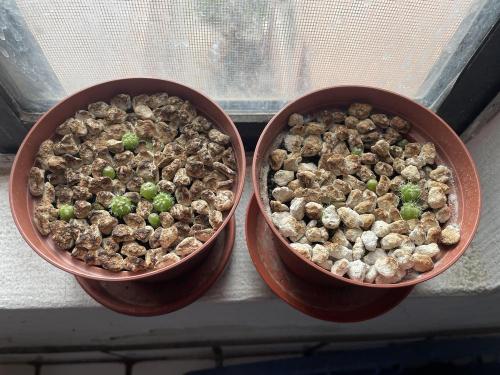That is a measure of light if I am not mistaken.
I have no experience with artificial light, so I can't comment on that. I start my seedlings on a sunny southerly facing windowsill with all natural light. Whatever light conditions work for full size plants ought to be sufficient for seedlings, in an indoor situation. Or at least that ought to give you a good starting point.
I have always started my seedlings in the same type of soil I use for my adult plants, maybe with a slightly finer grade of pumice. That mix is 50% pumice, 50% organic (evenly split between cocofiber and compost). I try to sterilize it by cooking it first and then sowing the seeds after the soil has cooled down. This cooking is not actually required depending on the source of the starting material, given big, fast growing seeds. It is increasingly important with tiny, slow growing seeds. It will reduce the growth of competing organisms and it will lower the likelihood of damping off (fungal problems).
If I am reusing old pots, I try to bleach them first to kill off any microscopic travelers. I do not use fungicide but I am very careful about hygiene (eg. watering only with purified water until the baby seedlings are well past the size where yours have been paused). I do acidify our purified water to pH 6 for all my plants. Don't know if it matters but a neutral or slightly acidic pH ought to be good.
I treat big seeds and small seeds differently. Most aloes and agaves make relatively big seeds, many cacti and most Crassulaceae make small to tiny seeds. The big seeds will be independent sooner and will enjoy an accelerated transition to normal watering. Small, slow growing seeds (eg. Mammillarias) will need to stay under plastic (and I don't lift it at all, ever) until a few months have passed. So I don't think there's one best method for all, you kind of have to tailor things for each plant.
There could be some issue with water. You sort of have to manage the transition from 100% humidity all the time (under clear plastic, with saturated soil) to 0% humidity some of the time (the adult plants will enjoy the soil drying out all the way on a fairly regular basis). Keep it gradual and progressive. For me that means keeping seedlings under cover (and not lifting the cover) until they are roughly pea sized (for cacti) or the size of a small fingernail (aloes, agaves). I cover with clear plastic wrap and water from below during this period (leaving the container parked in a deep saucer full of water for about half an hour to allow the water to saturate the soil).
Once I remove the lid, I transition to regular misting (also with purified water) 2 or 3 times a day for starters, with bottom watering on a weekly basis as before. The goal is for the top layer of soil to remain moist nearly all the time, and to keep the rest of the soil from going anywhere near dry. Bottom watering helps me avoid uprooting tiny plants (even a big drop of water can spell doom for a tiny seedling if it falls the wrong way). At some point when the seedlings are big enough to water from above I will start watering twice a week (with no more misting), and then maybe 6 months or a year into the process (with faster growing succulents) I might go to weekly watering.
Slower growing plants will sit there and look like they are doing nothing, but are in fact very gradually building up steam. So don't give up prematurely because of impatience. Your list of plants looks fairly ambitious so you might find some a lot harder than others.
Hope this helps.


to the forum!






